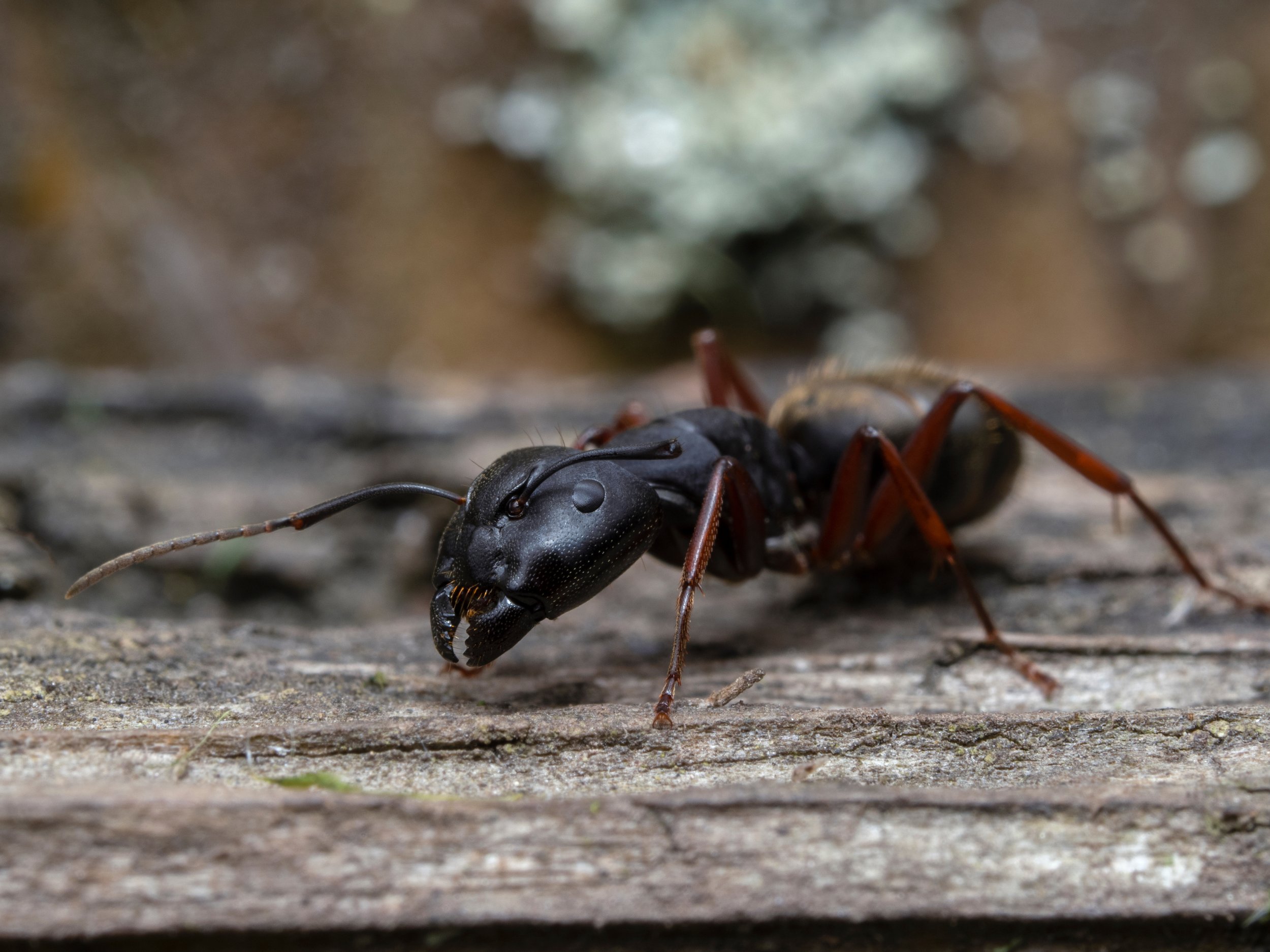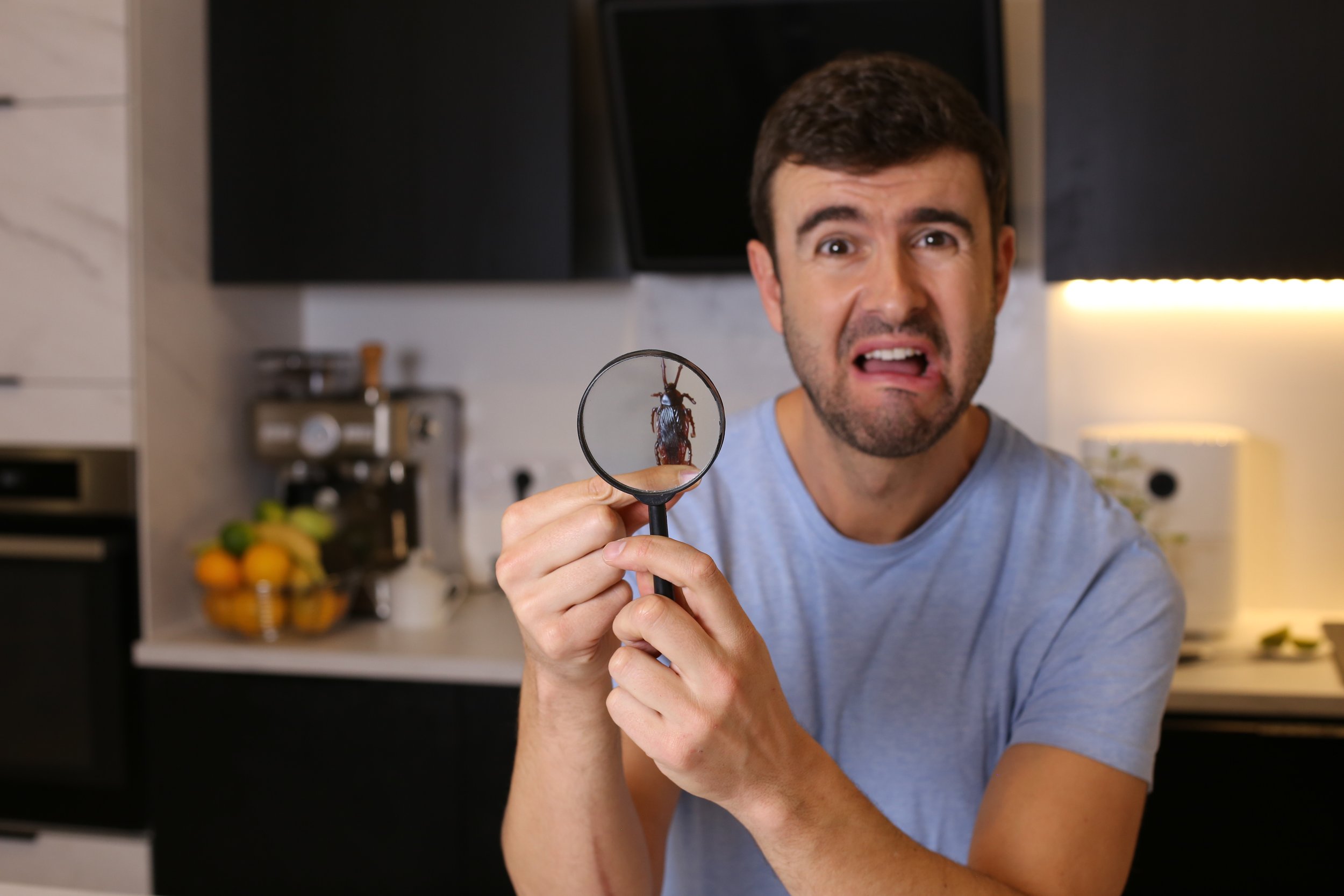5 Wood-Destroying Insects Every Homeowner Must Watch Out For

JONATHAN GIORGI
Pest Control Specialist | Lic. #13597
Published on February 18, 2024
Most pests are merely nuisances, posing little to no threat to the structure of your home. However, a specific category of pests, known as wood-destroying insects (WDI), can significantly compromise your home's integrity.
When these pests infest homes, they bore through wood to feed, nest, or lay eggs. This activity gradually hollows out the wood, weakening your house's structure over time.
Leaving these pests untreated can lead to thousands of dollars in damage. Being able to identify these pests and recognize signs of an infestation enables you to address the problem early, preventing major issues down the line.
Here are the top 5 wood-destroying insects every homeowner must watch out for:
Top 5 Wood-Destroying Insects
1. Termites
Identification:
Appearance: Soft, elongated bodies divided into three segments (head, thorax, and abdomen), six legs, and two straight, bead-like antennae.
Size: 1/4 to 1/2 inch.
Color: Creamy white to light or dark brown.
Unique Features: Reproductive termites have two pairs of wings of equal length.
Habitat/Nest/Dwelling Locations:
Preferred Environments: Moist, warm environments with an abundant supply of wood.
Places Found: Indoors – in support beams, floors, walls, and furniture. Outdoors – in soil, dead wood, tree stumps, decks, and sheds.
Signs of Infestation:
Indicators: Sighting of termites; mud tunnels on exterior walls, wooden beams, or in crawl spaces; damaged wood that sounds hollow when tapped.
Early Warning Signs: Small piles of frass (sawdust and droppings) near entry holes, visible lines on drywall indicating tunneling, and sightings of flying termites near windows or light sources.
Structural Damage:
Damage Type: Worker termites consume the wood and excavate tunnels to build and maintain the nest. This activity hollows out the wood, damaging the house's framework, gradually weakening the structure over time.
Affected Areas: Wooden beams, flooring, walls, roofs, and other wood-based structural elements. High-risk locations are areas where wood is in direct contact with soil or moisture, including attics, basements, and crawl spaces.
2. Wood-Boring Beetles
Identification:
Appearance: Small, hard bodies, that are either slender and elongated or stout and slightly rounded, six legs, and two prominent antennae. Larvae are grub-like, creamy white, and C-shaped.
Size: 1/16 inch (Powderpost Beetles) to 1 inch (Old House Borers).
Color: Light brown to black.
Unique Features: Powderpost Beetles leave behind fine, powder-like frass (sawdust and feces); Old House Borer larvae make a distinct "clicking" sound as they bore through wood; Adult Deathwatch Beetles produce a "ticking" sound as a mating call.
Habitat/Nest/Dwelling Locations:
Preferred Environments: Environments where their preferred wood type is plentiful.
Places Found: Indoors – in flooring, furniture, beams, wooden paneling, structural timbers, and decorative woodwork (door frames, moldings, stair railings, etc.). Outdoors – in dead trees, logs, and lumber.
Signs of Infestation:
Indicators: Sightings of wood-boring beetles, exit holes in wood, frass on the floor, and the sound of larvae feeding within the wood.
Early Warning Signs: Presence of fresh frass or sawdust near wooden objects and new exit holes in wood.
Structural Damage:
Damage Type: Adult wood-boring beetles lay their eggs in the cracks, crevices, or pores of wood. The larvae, also known as woodworms, consume the wood as they bore through it, forming tunnels and chambers, which hollows out the wood, weakening the house’s structure over time.
Affected Areas: Wooden beams, flooring, walls, roofs, furniture, and other wood-based structural and decorative elements. The specific areas affected vary by species – Powderpost Beetles prefer dry, seasoned hardwood; Old House Borers prefer softwood; and Deathwatch Beetles prefer damp, decaying hardwood.
3. Carpenter Ants
Identification:
Appearance: Three body parts (head, thorax, abdomen), six legs, a pinched 'waist,' and bent or elbow-shaped antennae.
Size: 1/4 inch to 1/2 inch.
Color: Red, brown, reddish-brown, or black.
Unique Features: A smooth, curved thorax; large mandibles; heart-shaped head when viewed from above; polymorphic species, with soldier ants being much larger than other worker ants.
Habitat/Nest/Dwelling Locations:
Preferred Environments: Moist environments near decaying or damaged wood.
Places Found: Indoors – in attics and crawl spaces, behind bathroom tiles, around windows, doorframes, sinks, tubs, showers, and dishwashers. Outdoors – around roof eaves, decks, porches, in hollow trees, stumps, logs, landscaping timbers, fence posts, and under stones or logs.
Signs of Infestation:
Indicators: Sightings of carpenter ants, small piles of frass (sawdust and feces) near wooden objects, exit holes in wood, and the sound of rustling within walls or wooden structures.
Early Warning Signs: Small piles of fresh frass or sawdust near wooden objects; flying ants emerging from ceilings, walls, or other hidden cracks and crevices.
Structural Damage:
Damage Type: Carpenter ants tunnel through wood, crafting a complex network of tunnels and chambers known as galleries for nesting. This activity hollows out the wood, leading to a gradual weakening of the house’s framework over time.
Affected Areas: Wooden beams, flooring, walls, roofs, and other wooden structures. While they prefer moist wood, they can expand into dry, undamaged wood as well.
4. Carpenter Bees
Identification:
Appearance: Large, robust bodies with three body segments (head, thorax, and abdomen), six legs, one pair of wings, and two antennae.
Size: 1/2 inch to 1 inch.
Color: Black, with some yellow or white.
Unique Features: Bare, smooth, and shiny abdomens; males often have a white or yellow face, while females are typically all black.
Habitat/Nest/Dwelling Locations:
Preferred Environments: Environments where exposed wood is available for nesting.
Places Found: Indoors – rarely found. Outdoors – in eaves, fascia boards, deck railings, and wooden furniture.
Signs of Infestation:
Indicators: Round, smooth holes approximately 1/2 inch in diameter in wood surfaces; piles of sawdust beneath entry holes; and large bees hovering near the wood's surface.
Early Warning Signs: The appearance of carpenter bees around wooden structures in the spring, which is their most active season for establishing new nests.
Structural Damage:
Damage Type: Carpenter bees drill into wood to create tunnels and nests for laying eggs. The entrance holes and tunnels can cause cosmetic damage and, over time with repeated use and expansion, may compromise the structural stability of the wood.
Affected Areas: Window trim, deck railings, fascia boards, eaves, and outdoor furniture. They prefer untreated or unpainted softwoods such as cedar, redwood, cypress, pine, and fir.
5. Horntails (Wood Wasps)
Identification:
Appearance: Stout, cylindrically shaped bodies, with six legs, two pairs of wings, two antennae, and a pointed abdomen.
Size: 3/4 inch to 1 1/2 inches.
Color: Dark brown to black, with yellow or reddish markings.
Unique Features: Elongated spine or "horn" extending from the rear of the abdomen; females have a long ovipositor used for laying eggs, which is often mistaken for a stinger.
Habitat/Nest/Dwelling Locations:
Preferred Environments: Forests or wooded areas with dead or dying softwood trees.
Places Found: Indoors – usually not found unless the lumber used in the construction of the house was already infested. Outdoors – in dead or dying softwood trees and lumber used in construction.
Signs of Infestation:
Indicators: Presence of adult horntails near wood or emerging from lumber; small holes approximately 1/4 inch in diameter in wood surfaces where larvae have exited.
Early Warning Signs: Finding larvae or frass (sawdust and feces) near wood.
Structural Damage:
Damage Type: Horntails lay their eggs in the small openings of wood. The larvae then bore into the wood as they feed, creating long, winding, round tunnels. This damage gradually weakens the wood's internal structure.
Affected Areas: Structural timber, logs, and lumber. Horntails do not have a preference for dry or moist wood but are typically associated with softer woods like pine or spruce.
Summary
Being able to identify wood-destroying insects is essential for every homeowner to protect their property. Termites, wood-boring beetles, carpenter ants, carpenter bees, and horntails represent the top threats. These pests damage the house’s structure by hollowing out wood.
Identifying signs of infestation early on, such as spotting adult insects, exit holes, frass, or weakened wood, is key to preventing extensive and costly damage. Regular inspections, prompt treatment of infestations, and preventive measures can safeguard your home against the significant financial and safety risks posed by these pests.
By staying informed and proactive, homeowners can effectively manage these threats and maintain the integrity of their homes for years to come.
Now It's Your Turn
If you suspect an infestation of wood-destroying insects in your home, start by checking for adults, exit holes, and frass. These signs are commonly found in attics, crawl spaces, or near windows, doorframes, and plumbing fixtures.
Once you've located an adult insect, use a glue board or sticky fly trap to capture it. Then, identify it by examining its appearance, size, color, and unique features. If you encounter difficulty identifying the pest, use a magnifying glass to take a closer look.
By correctly identifying the insect you're dealing with, you can take the appropriate steps to eliminate the infestation effectively.








